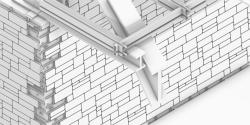The city of Skopje has a distinct character of chaos and destruction resulting from natural and manmade disasters through its history which in turn results in losing the physical environment and city memory. The reconstruction of this ravaged city is always an inevitable world problem. Although, the people of Skopje struggle with political disputes about their cultural identity even today, is it possible to reconstruct the resilient city that bear informal and formal history and unofficial memories as a remembrance of cultural identity to blend in with the new life order and new construction technologies? Can architecture reclaim its social and political role as a discipline in the past catastrophic condition since architecture is an anchor and physical reminder of collective memory?
After the catastrophe of the 1963 earthquake, the scale of the international solidarity towards Skopje has been described as ‘‘unrivalled in UN history.’’ hence an international competition was initiated, charity organizations including dozens of countries donated materials for aid and reconstruction, but instability between funds allocation and realization for reconstruction of Skopje shows the lack of technique and procedure. In that sense, the proposal envisions how it could unveil the multi-layered structure of the city by managing the debris fro m the disasters.
What if all the city could be made by sustained ruin until now, how could it have looked and what kind of tamed structures would been erected? Coexisting of architectural history of Skopje was a first step to understanding dialectic relation of debris and earth because overlapping city damage pattern maps gives a new landform to the city in urban scale. In architectural scale, intersection and accumulation of the vast collection of architecture in Skopje is catalyzed by different kinds of speculative spatial organization and memories of their exact locality.
Structure consists of taming spaces such as processing labs, catastrophe offices, ateliers, public spaces, data library etc. Program of that locality acts as a prototype of taming process to merge new and old socially and spatially. Moreover, it creates an environment in which the global capital can invest in sustainable construction in Skopje.
2019
2019






